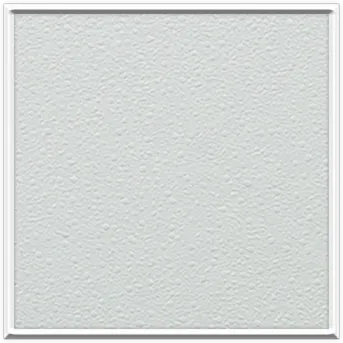Dec . 12, 2024 11:01 Back to list
fibre false ceiling materials
Exploring Fibre False Ceiling Materials
False ceilings, also known as suspended ceilings, have become a popular choice in modern architecture and interior design. They not only serve functional purposes, such as concealing ductwork and electrical systems, but they also enhance the aesthetic appeal of a space. Among various types of false ceilings, fibre materials have garnered attention for their versatility, lightweight properties, and acoustic benefits.
Fibre false ceiling materials primarily include mineral fiber, glass fiber, and various composites that are designed to meet specific performance criteria. One of the major advantages of these materials is their sound absorption capabilities. In commercial buildings such as offices and conference rooms, controlling noise levels is critical for productivity. Fibre ceilings can effectively minimize sound transmission, creating a more conducive environment for communication and concentration.
In addition to their acoustic properties, fibre false ceilings offer a range of aesthetic options. Available in various colors, textures, and patterns, they can be customized to complement any interior design scheme. Whether you prefer a sleek modern look or a more traditional finish, fibre materials can easily adapt to your vision. Some manufacturers even offer options with printed designs, allowing for a unique, artistic touch that can enhance the overall atmosphere of a room.
Another important aspect of fibre ceilings is their fire resistance. Most fibre materials are treated with fire-retardant chemicals, making them a safer option in case of a fire. This characteristic is particularly significant in commercial buildings that must adhere to strict safety regulations. When installed correctly, fibre false ceilings can help slow the spread of flames, allowing for more time for evacuation.
fibre false ceiling materials

Furthermore, fibre materials are lightweight and easy to install, providing a cost-effective solution for ceiling applications. Unlike heavier materials, fibre false ceilings reduce the load on the building's structure, making them suitable for both new constructions and renovations. Their lightweight nature also simplifies installation processes, reducing labor costs and construction time.
However, it's important to note that while fibre false ceilings come with numerous advantages, they do require proper maintenance to ensure longevity. High humidity and moisture can lead to mold growth or damage, especially in environments like kitchens or bathrooms. Therefore, it’s essential to choose the right type of fibre material specifically designed for areas exposed to moisture. Regular cleaning and periodic inspections can help maintain their appearance and functionality over time.
Sustainability is another factor to consider when choosing false ceiling materials. Many manufacturers are increasing their focus on eco-friendly production processes and raw materials. Opting for fibre false ceilings made from recycled products or those that are easily recyclable can help contribute to a greener environment.
In conclusion, fibre false ceiling materials offer a blend of functionality, aesthetics, and safety that makes them a popular choice for various applications. With their excellent acoustic properties, fire resistance, and customizable designs, these materials can significantly enhance the ambiance of any space. Whether for a commercial or residential setting, fibre false ceilings represent an innovative solution that meets the evolving demands of modern architecture. As the trend towards sustainability continues to grow, consumers can feel confident in selecting fibre materials that not only meet their design preferences but also align with environmental values.
-
Durable Ceiling T Grid Systems | Easy InstallationNewsAug.29,2025
-
PVC Gypsum Ceiling: Durable, Laminated Tiles for Modern SpacesNewsAug.28,2025
-
Pvc Gypsum Ceiling Is DurableNewsAug.21,2025
-
Mineral Fiber Board Is DurableNewsAug.21,2025
-
Ceiling Tile Clip Reusable DesignNewsAug.21,2025
-
Ceiling T Grid Modular DesignNewsAug.21,2025







